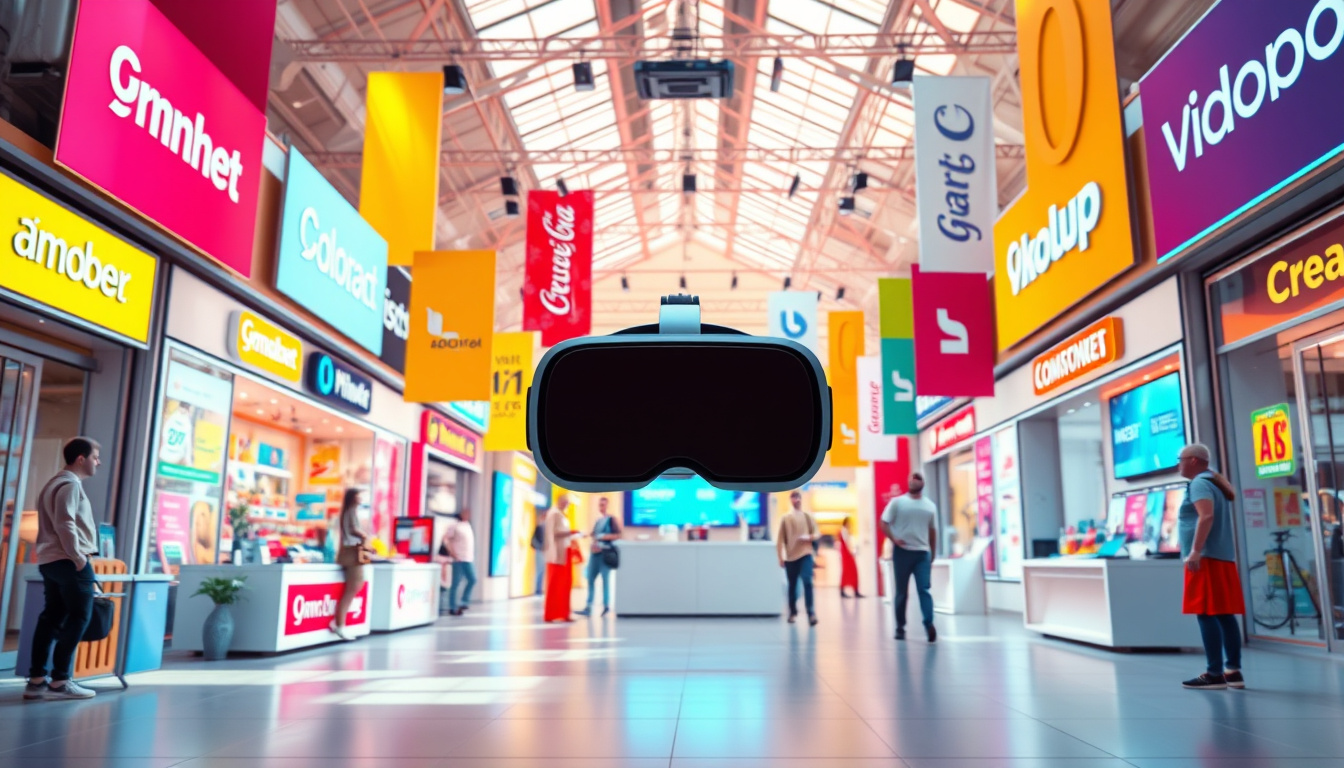In the evolving landscape of marketing, brands are continuously seeking innovative ways to forge meaningful connections with their audiences. One of the most powerful tools emerging in this domain is the integration of Virtual Reality (VR) and Augmented Reality (AR). While both technologies offer unique capabilities, their combined effect can create immersive branding experiences that captivate consumers, enhance brand loyalty, and ultimately influence purchasing decisions.
Understanding VR and AR in Branding
The Basics of Virtual Reality
Virtual Reality transports users into fully immersive digital environments, enabling them to interact with products or experiences as if they were real. By wearing VR headsets, consumers can explore virtual showrooms, participate in interactive games, or undergo engaging narratives that resonate emotionally, making VR a game-changer in experiential marketing.
Enhancing Reality with Augmented Elements
In contrast, Augmented Reality enhances the real-world experience by overlaying digital content onto physical environments. This could include interactive features that allow consumers to visualize products in their own space (like furniture in a living room) or participate in gamified experiences that bring brand stories to life.
Key Benefits of Using VR and AR in Branding
-
Creating Immersive Experiences:
Brands can engage consumers on a deeper emotional level through immersive storytelling. For instance, TOMS Shoes has utilized VR to showcase the impact of their business model, allowing customers to “walk in the shoes” of those helped by their purchases. This approach not only informs customers but also fosters empathy and loyalty. -
Personalization of Interactions:
Both VR and AR offer the opportunity for personalized experiences. Brands like Patrón have employed VR to create tailored content that connects consumers with their origins and storytelling, enhancing the overall brand narrative. Such personalized interactions can significantly boost customer retention by making consumers feel valued and understood. -
Interactivity and Engagement:
This new form of media encourages active participation, increasing the likelihood of information retention and brand recognition. A case study of McDonald’s “Happy Goggles” illustrates this point; by turning kids’ meal boxes into VR headsets, the brand transformed a simple product into an engaging experience that attracted attention and excitement. -
Analytics and Insights:
The data collected from VR and AR interactions provide brands with valuable insights into consumer behavior and preferences. This data-driven approach allows companies to refine their strategies and create targeted campaigns that resonate with their audience.

Inspiring Examples of VR and AR in Action
Numerous brands are currently thriving through effective use of VR and AR:
-
Marriott International has harnessed VR to revolutionize event planning by offering virtual venue tours. Prospective customers can navigate through 3D spaces, seeing setups as if they were walking through the venue itself, thus simplifying decision-making.
-
Maybelline’s creation of a massive AR mirror allowed consumers to try products in real-time. This interactive campaign promoted engagement and made the product experience memorable, generating excitement and bolstering brand visibility.
-
Vroom, an online car retailer, has reconstructed the car-buying experience through VR showrooms that let users virtually interact with various car models, making the purchase process rigorous yet enjoyable.
Best Practices for Implementing VR and AR
To leverage VR and AR effectively in branding, businesses should follow these best practices:
-
Define Clear Objectives:
Identify what you want to achieve through VR and AR implementation, whether it’s enhancing brand awareness, increasing sales, or improving customer engagement. -
Prioritize User Experience:
The technology should be built around the user’s experience. Ensure that interactions are seamless and easy, minimizing the technology’s complexity to encourage participation. -
Integrate Across Platforms:
Utilize VR and AR as part of a larger marketing strategy that includes other channels and customer interactions to create a cohesive brand presence. -
Measure and Optimize:
Always track interactions and user engagement metrics to assess the impact and effectiveness of your experience. Continuous refinement can lead to more fruitful outcomes.
The Future of Branding in VR and AR
As VR and AR technologies continue to advance and become more accessible, brands will increasingly adopt these technologies to create immersive brand experiences. From engaging interactive campaigns to personalized storytelling, the potential for enhancing consumer engagement is vast. Adapting to this digital shift not only meets consumer demands but also positions brands at the forefront of innovation in a competitive marketplace.
In conclusion, embracing Virtual Reality and Augmented Reality is not just an option; it’s becoming essential for brands looking to differentiate themselves and cultivate lasting relationships with their consumers. By integrating these technologies thoughtfully into marketing strategies, companies can create memorable and impactful branding experiences that consumers will cherish.
—————————————————-
Are you tired of the 9-to-5 grind? Unlock the secrets to online income generation. GetIncomeNow.com is your roadmap to financial freedom. We reveal proven methods, insider tips, and cutting-edge strategies to help you achieve your income goals. Start your journey to financial independence today!
